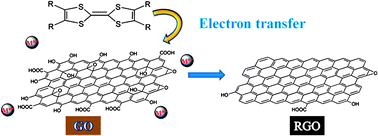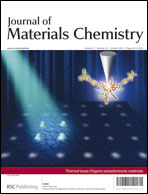Abstract
A facile and convenient method for the reduction of graphite oxide (GO) to reduced GO (RGO) is established by taking advantage of the electron transfer from TTF to GO in the presence of metal ions (Sc3+/Pb2+). The resulting RGO is characterized by

- This article is part of the themed collection: Organic optoelectronic materials

 Please wait while we load your content...
Please wait while we load your content...